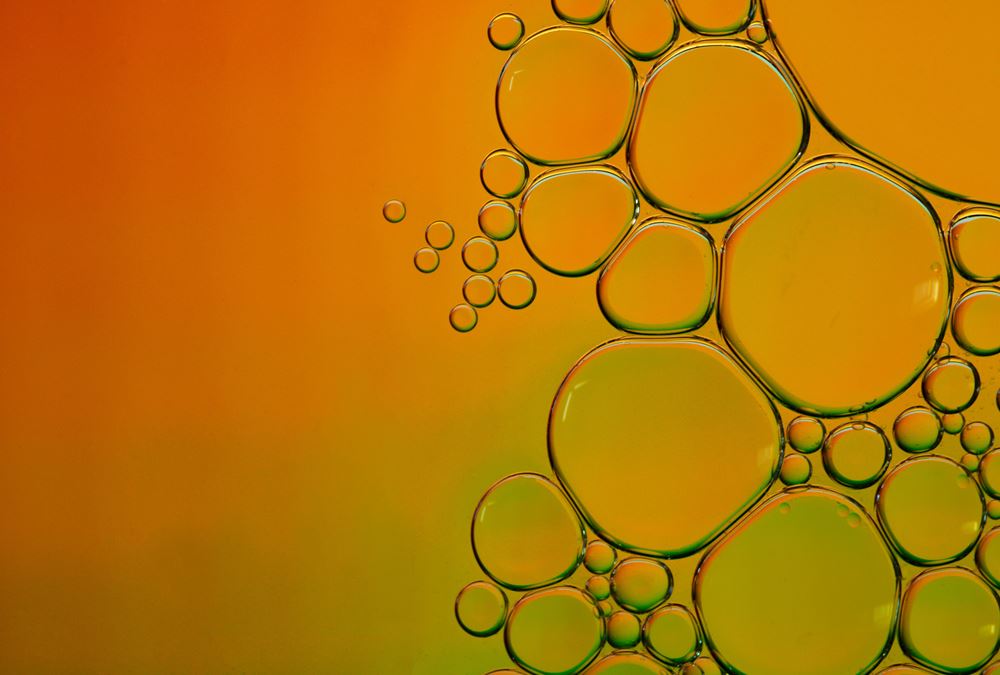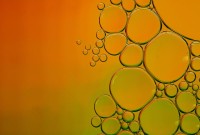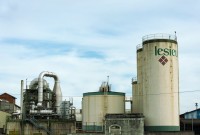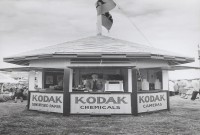- Home
- Business Processes
- Industry Knowledge
- Aerospace Industry
- Automotive Industry
- Banking Domain
- BFSI Industry
- Consumer/ FMCG Industry
- Chemicals Industry
- Engineering & Construction
- Energy Industry
- Education Domain
- Finance Domain
- Hospitality Domain
- Healthcare Industry
- Insurance Domain
- Retail Industry
- Travel and Tourism Domain
- Telecom Industry
- Leadership Skills
- eLearning
- Home
- Domain Knowledge
- Chemicals Industry
- Overview of Chemicals Industry
Overview of Chemicals Industry
The chemical industry is critical for the economic development of any country, providing products, and enabling technical solutions in virtually all sectors of the economy. This article provides an overview of the chemical industry, explaining the definition and processes in the chemical domain. Read about the various segments of the chemical industry and what they do. A brief discussion on the major players in the chemical domain and their impact on the global and US economy.
The chemicals industry is comprised of thousands of companies throughout the world that use basic raw materials to produce chemicals that have commercial value to consumers and other industries. The chemical industry comprises companies that produce industrial chemicals. The chemical industry involves the use of chemical processes such as chemical reactions and refining methods to produce a wide variety of solid, liquid, and gaseous materials. Most of these products are used in the manufacture of other items, although a smaller number is used directly by consumers. These chemicals are used to produce plastics, synthetic fibers, lightweight automobile parts, fertilizers, cosmetics, household materials, computers, and many more products.
Central to the modern world economy, it converts raw materials (oil, natural gas, air, water, metals, and minerals) into more than 70000 different products. According to the ACC, over 96 percent of all manufactured goods are dependent in some way on the chemical industry. Chemicals are used to make a wide variety of consumer goods, as well as thousands of inputs to agriculture, manufacturing, construction, and service industries. The chemical industry itself consumes 26 percent of its own output. Major industrial customers include rubber and plastic products, textiles, apparel, petroleum refining, pulp and paper, and primary metals.
During the 19th and 20th centuries, technological advances in the chemical industry dramatically altered the world's economy. Chemical processes have created pesticides and fertilizers for farmers, pharmaceuticals for the health care industry, synthetic dies and fibers for the textile industry, soaps and beauty aids for the cosmetics industry, synthetic sweeteners and flavors for the food industry, plastics for the packaging industry, chemicals and celluloid for the motion picture industry, and artificial rubber for the auto industry.
This section on Chemical Industry Domain is designed to help learners understand an overview, key concepts, terminology, business sectors and drivers, trends, issues, and challenges associated with the chemicals industry. It will identify the main sectors of the chemicals industry and its business drivers, and review the key aspects of the industry business model, its competitive environment, and the current trends in the industry. This section is designed to be helpful to consulting houses, industry investors, IT professionals working on chemicals or manufacturing domain, and all size companies that sell products or services to chemical sector and industries; organizations looking for knowledge and key business information/competency in the chemicals domain. Articles in this section also outline some key challenges that this industry is facing and presents common strategies that the players in the industry are adopting to overcome its challenges.
What is the Chemical Industry?
Chemicals are a part of every aspect of human life, right from the food we eat to the clothes we wear to the cars we drive. The chemical industry comprises companies that produce industrial chemicals. The chemical industry involves the use of chemical processes such as chemical reactions and refining methods to produce a wide variety of solid, liquid, and gaseous materials. Most of these products are used in the manufacture of other items, although a smaller number is used directly by consumers.
Chemical Industry & Economy:
Central to the modern world economy, it converts raw materials (oil, natural gas, air, water, metals, and minerals) into more than 70000 different products. According to the ACC, over 96 percent of all manufactured goods are dependent in some way on the chemical industry. Chemicals are used to make a wide variety of consumer goods, as well as thousands of inputs to agriculture, manufacturing, construction, and service industries. The chemical industry itself consumes 26 percent of its own output. Major industrial customers include rubber and plastic products, textiles, apparel, petroleum refining, pulp and paper, and primary metals.
The chemical industry contributes significantly to improving the quality of life through breakthrough innovations enabling pure drinking water, faster medical treatment, stronger homes, and greener fuels. The chemical industry is critical for the economic development of any country, providing products, and enabling technical solutions in virtually all sectors of the economy.
What are Chemical Processes?
Chemical processes such as chemical reactions are used in chemical plants to form new substances in various types of reaction vessels. In many cases, the reactions are conducted in special corrosion-resistant equipment at elevated temperatures and pressures with the use of catalysts. The products of these reactions are separated using a variety of techniques including distillation especially fractional distillation, precipitation, crystallization, adsorption, filtration, sublimation, and drying.
The processes and products or products are usually tested during and after manufacture by dedicated instruments and on-site quality control laboratories to ensure safe operation and to assure that the product will meet the required specifications. The products are packaged and delivered by many methods, including pipelines, tank-cars, and tank-trucks (for both solids and liquids), cylinders, drums, bottles, and boxes. Chemical companies often have a research and development laboratory for developing and testing products and processes. These facilities may include pilot plants, and such research facilities may be located at a site separate from the production plant(s).
Types of Chemicals:
Chemical products can be divided into four general categories:
- Basic and intermediate chemicals
- Specialty chemicals:
- Life science chemicals
- Science and technology chemicals
Basic and Intermediate Chemicals:
The major products of this segment include polymers, bulk petrochemicals and intermediates, fertilizers, inorganic chemicals, and other industrial chemicals. Employing almost a third of workers in the industry, this segment is the largest of the four, providing plastics for packaging, home construction, appliances, polyvinyl chloride (PVC), piping, toys, and games. Polymers and plastics include polyethylene, polypropylene, polyvinyl chloride, polyethylene terephthalate, polystyrene, and polycarbonate. This segment comprises about 80% of the industry’s output worldwide.
Specialty Chemicals:
These chemicals are typically high- value-added products with many differentiations. The major products of this segment include paints and coatings, adhesive sealants, catalysts, dyes and pigments, industrial gases, resins, and plastic additives. Typical growth rates are one to three times GDP with prices over a dollar per pound. They are generally characterized by their innovative aspects. Products are sold for what they can do rather than for what chemicals they contain. Products include electronic chemicals, industrial gases, adhesives and sealants as well as coatings, industrial and institutional cleaning chemicals, and catalysts. Coatings make up about 15 percent of specialty chemicals sales, with other products ranging from 10 to 13 percent. Specialty Chemicals are sometimes also referred to as "fine chemicals".
Life Science Chemicals:
These are differentiated biological and chemical substances used to induce specific outcomes in humans, animals, plants, and other life forms. The major products of this segment include agrochemicals, pharmaceuticals, and biotechnology products. Life sciences (about 30 percent of the dollar output of the chemistry business) include differentiated chemical and biological substances, pharmaceuticals, diagnostics, animal health products, vitamins, and pesticides. Life science products are usually produced with very high specifications and are closely scrutinized by government agencies such as the Food and Drug Administration. Pesticides, also called "crop protection chemicals", are about 10 percent of this category and include herbicides, insecticides, and fungicides.
Science and Technology Chemicals:
These products include advanced materials that transform current technologies. They enhance the characteristics of traditional specialty chemical products, as listed above.
Major Players in Chemical Domain:
The largest corporate producers worldwide, with sales of chemical products greater than $10 billion dollars in the fiscal year 2007 were:
- BASF SE, Ludwigshafen, Germany $65.3 1
- Dow Chemical, Midland, Michigan, United States $53.5 2
- INEOS, Lyndhurst, UK $43.6 3
- LyondellBasell, Houston, Texas, United States $42.8 4
- Formosa Plastics, Taiwan $31.9 5
- DuPont, Wilmington, Delaware, United States $28.5 6
- Saudi Basic Industries Corporation, Riyadh, Saudi Arabia $26.4 7
- Bayer, AG, Leverkusen, Germany $24.2 8
- Mitsubishi Chemical, Tokyo, Japan $22.2 9
- Akzo Nobel/Imperial Chemical Industries(ICI), Amsterdam/London $19.9 10
- Air Liquide, Paris, France $16.3 11
- Sumitomo Chemical, Tokyo, Japan $15.2 12
- Evonik Industries, AG, Essen, Germany $15.0 13
- Mitsui Chemicals, Tokyo, Japan $14.3 14
- Asahi Kasei, Tokyo, Japan $13.8 15
- Toray Industries, Tokyo, Japan $13.1 16
- Chevron Phillips, The Woodlands, Texas, United States $12.5 17
- DSM NV, Heerlen, Netherlands $12.1 18
- PPG Industries, Pittsburgh, Pennsylvania, United States $11.2 19
- Shin-Etsu Chemical Co., Ltd., Tokyo, Japan
Along with this, there are thousands of smaller firms that operate and deal with chemicals worldwide.
Global Chemical Industry:
The chemical industry includes large, medium, and small companies located worldwide. The chemicals industry established its importance in national economies and grew to about $3.7 trillion USD in sales. Millions of people got employed by the chemicals industry in production, research, and development, as well as chemists, engineers, and technicians. Though the business of chemistry is worldwide in scope, the bulk of the world’s $3.7 trillion chemical output is accounted for by only a handful of industrialized nations. The United States alone produced $689 billion, 18.6 percent of the total world chemical output in 2008. The industry in the US directly employs over 800,000 people nationwide. A total of nearly 5.5 million additional jobs are supported by the purchasing activity of the chemical industry and by the subsequent expenditure-induced activity.
The chemical industry is central to the modern world economy having a typical sales-to-GDP ratio of 5-6%. Global chemical production growth slowed down from 4.4% p.a. in 1999-2004 to 3.6% p.a. in 2004-2009, with global chemical sales in FY10 valued at $3.4 trillion.
With Asia’s growing contribution to the global chemical industry, India emerges as one of the focus destinations for chemical companies worldwide. With the current size of $108 billion1, the Indian chemical industry accounts for approximately 7% of Indian GDP. The chemicals sector accounts for about 14% in the overall index of industrial production. The share of industry in national exports is around 11%. In terms of volume, India is the third-largest producer of chemicals in Asia, after China and Japan.
Related Links
You May Also Like
-
Overview of Chemicals Industry
The chemical industry is critical for the economic development of any country, providing products, and enabling technical solutions in virtually all sectors of the economy. This article provides an overview of the chemical industry, explaining the definition and processes in the chemical domain. Read about the various segments of the chemical industry and what they do. A brief discussion on the major players in the chemical domain and their impact on the global and US economy.
-
Industry trends are examined to make predictions. This article discusses the trends in the chemicals industry including trends related to consumer behavior, employment, technological advancements, new product development, competition, government norms, and other factors that impact the industry.
-
Fundamentally, the chemicals industry can be divided into two sectors; commodity/basic chemicals and specialty chemicals. Commodity chemicals are manufactured by many different companies however the end product is generally the same with very little variations. There exist other segmentations for this industry as well. Understand the main sectors of the chemical domain.
-
Business Model & Value Chain of Chemicals Industry
Understand the three critical business models applied by the Chemicals Industry to create value for its customers; asset-driven business model, integrated business model, and specialties business model. This article also explains the chemical industry value chain and provides some practical examples for a better understanding.
-
This article provides a concise history of the chemicals industry. How the chemical industry progressed and changed over time. Explore the journey of the Chemical industry from the early ages to the twenty-first century. Chemicals have been manufactured for thousands of years. The history of the chemicals industry can be traced back to ancient times when alkali and limestone were combined to make glass, and sulfur and saltpeter became an explosive that is similar to modern gunpowder.
-
Chemicals Industry’s Supply Chain
This article explains the chemical industry supply chain and addresses key questions like the importance of supply chain management and why the chemicals industry needs to focus on supply chain management. Understand the key factors influencing the supply chain for the chemicals industry and strategies to overcome the current challenges.
-
Importance / Impact of Chemicals Industry
Chemical Industry is engaged in the development, optimization, and monitoring of fundamental chemical processes used in industry for transforming raw materials and precursors into useful commercial products for society. Learn more about the importance and impact of the chemical industry on agriculture, environment, hygiene, food, painting, etc.
Explore Our Free Training Articles or
Sign Up to Start With Our eLearning Courses

About Us
Learning
© 2023 TechnoFunc, All Rights Reserved







